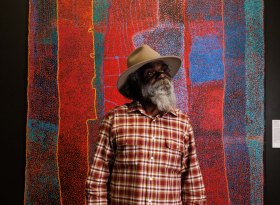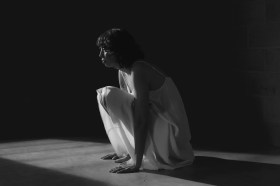NFTs (Non-Fungible Tokens) are still making waves and headlines, as artists and art collectors jump onboard the craze. Whether or not you’re still weighing up the NFT pros and cons, it looks like NFTs are here to stay.
As the intersection between art and technology continues to grow, traditional art industry players are embracing the trend and diving head first into the NFT market. What can we expect to see in the future of NFT art? Here’s how Australian creatives have been adapting, and some NFT events to watch out for in the coming months.
Australia’s first NFT gallery
Australia’s first NFT gallery, the Museum of Art & Philosophy (MAP) opened earlier this month in Hobart with its first exhibition showcasing digital artists from across the world.
‘NFTs enable digital artists to compete in the art world alongside fine artists in more traditional media,’ said Antonia Case, curator of MAP, and editor of Womankind.
‘Our print magazines have been supporting artists for almost a decade now, and the NFT market is a unique opportunity for digital artists to be remunerated for their work,’ said Case.
The exhibition will showcase the artwork of artists featured in print magazines New Philosopher and Womankind, including international digital artists Peter Strain, Alvaro Tapia Hidalgo, Charis Tsevis, Aida Novoa, Carlos Egan, Stavros Damos, Narjes Mohammadi, Monica Barengo, and Catrin Welz-Stein.
MAP’s first exhibit will open from 16-22 June at 7 Campbell Street, Hobart.
Read: NFT art: the bizarre world where buring a Banksy can make it more valuable
Artists discovering the ‘big opportunity’ of the NFT marketplace
Melbourne-based 3D graphic designer Paul Milinski recently released a collection of his digital artworks for public auction on NFT marketplace, Nifty Gateway.
‘This exhibition is a big opportunity to make my mark in the digital art space,’ said Milinski.
Titled The Reverie, the collection went up for auction earlier in May and was made up of 11 animated pieces. Known for pairing objects with non-traditional environments and creating objects that don’t exist in the physical world, Milinski’s artworks seems well suited to becoming NFTs.
‘I’m equally nervous and excited about the concept of NFTs and what this means for digital artists. Yes, we’ll have to overcome hurdles, but I think it will allow artists/designers to gain more fans and build strong portfolios,’ Milinski said.
Another drop of Milinski’s pieces will be released later this year in August, with details of the collection yet to be announced.
Read: Are NFTs already on the nose?
Making socially aware NFTs
As an antidote to the argument that NFTS are bad for the environment some artists are looking for new ways to give back to the community.
At this year’s Venice Biennale, Australian artists Daniel Stricker (DP Immersive) and Vincent Heimann debuted their Virtual Reality (VR) work Shifting Homes. The immersive, virtual journey takes viewers to a possible future in the independent state of Soma, a country painfully vulnerable to climate change.
To coincide with the 2021 Venice Biennale launch, the team released their Shifting Homes NFT artwork for sale, powered by PoS Blockchain and completely carbon offset by ‘Offsetra’.
To continue spreading awareness about climate change and to give back to the communities affected, all proceeds of sales will be donated to the village of Poutasi in Samoa, under threat from climate change and rising sea levels, and future DP Immersive social impact projects. It’s one of the many ways in which artists are grappling with NFTs as both damaging while offering direct revenue.





